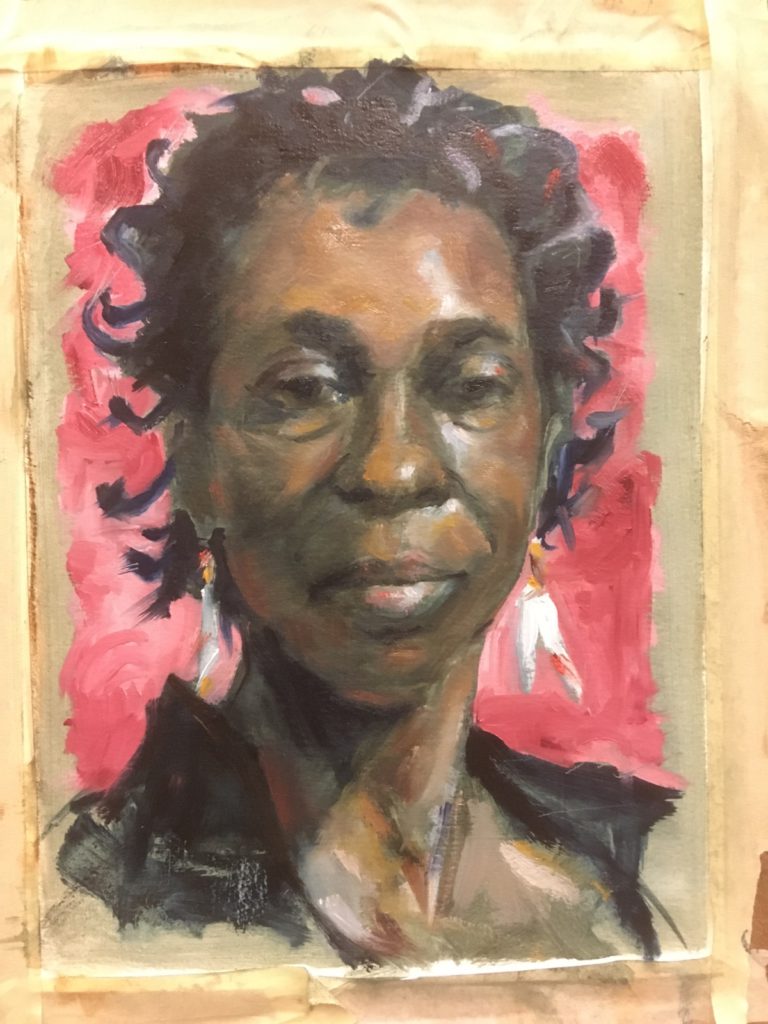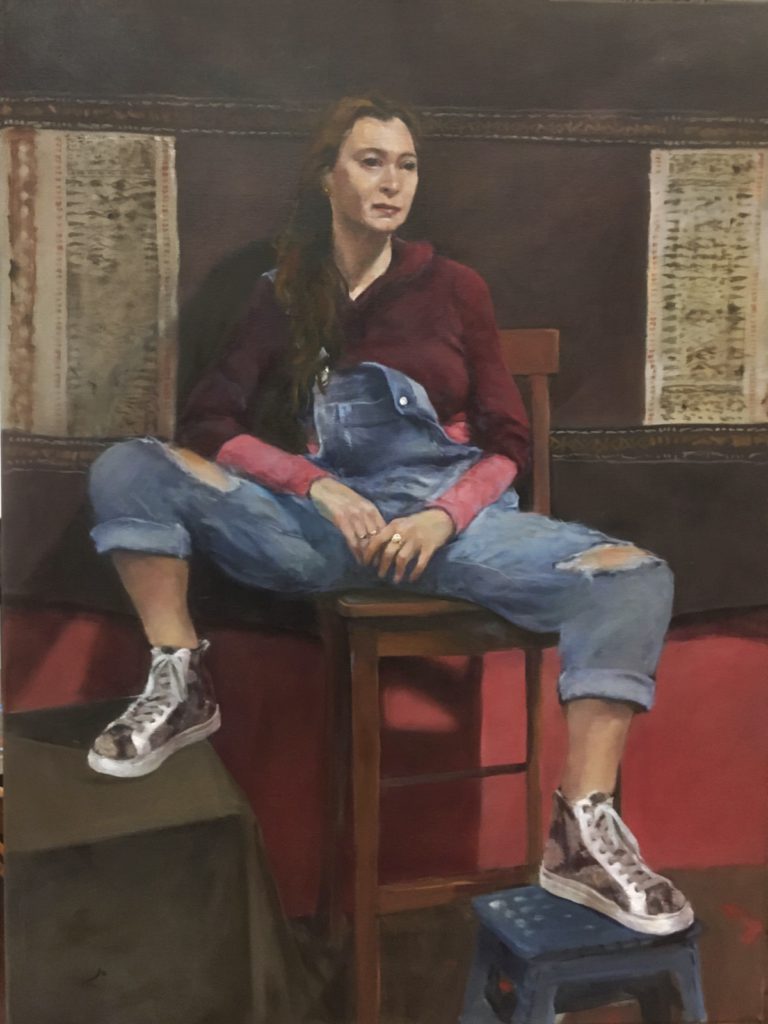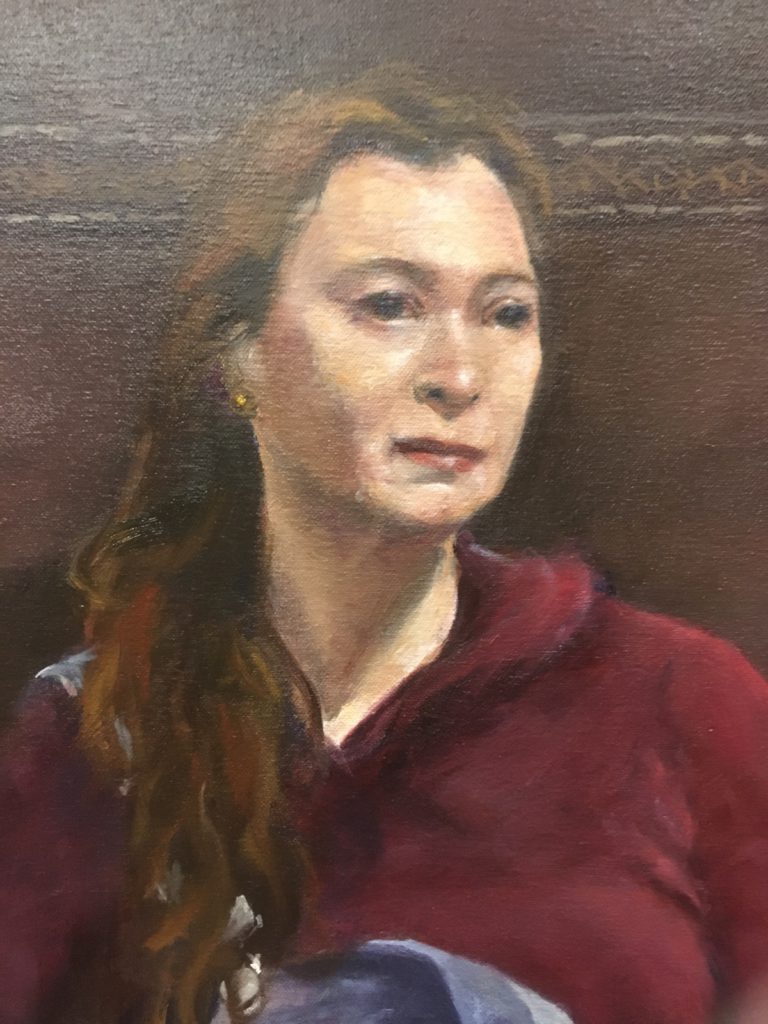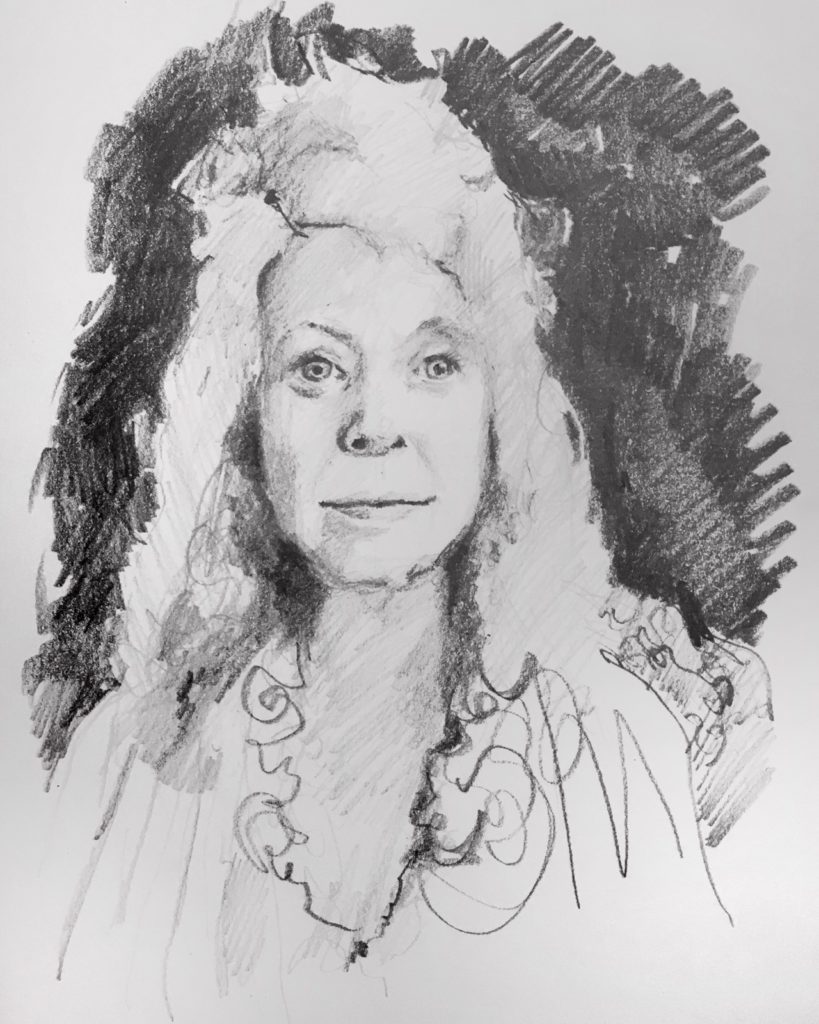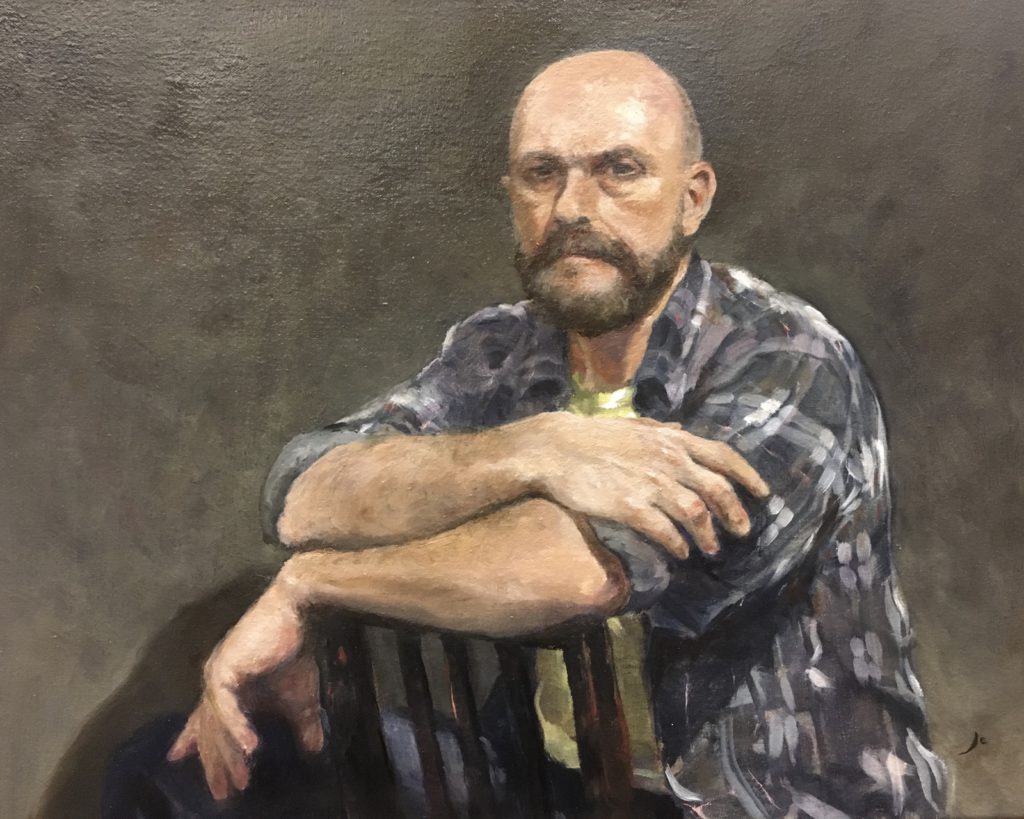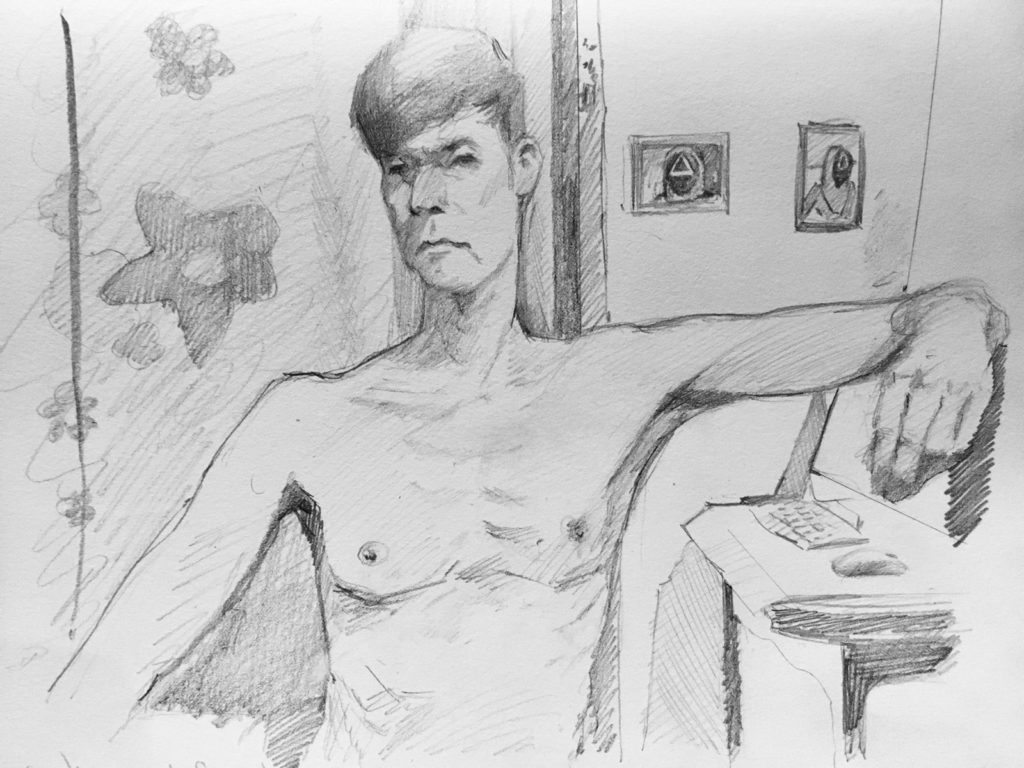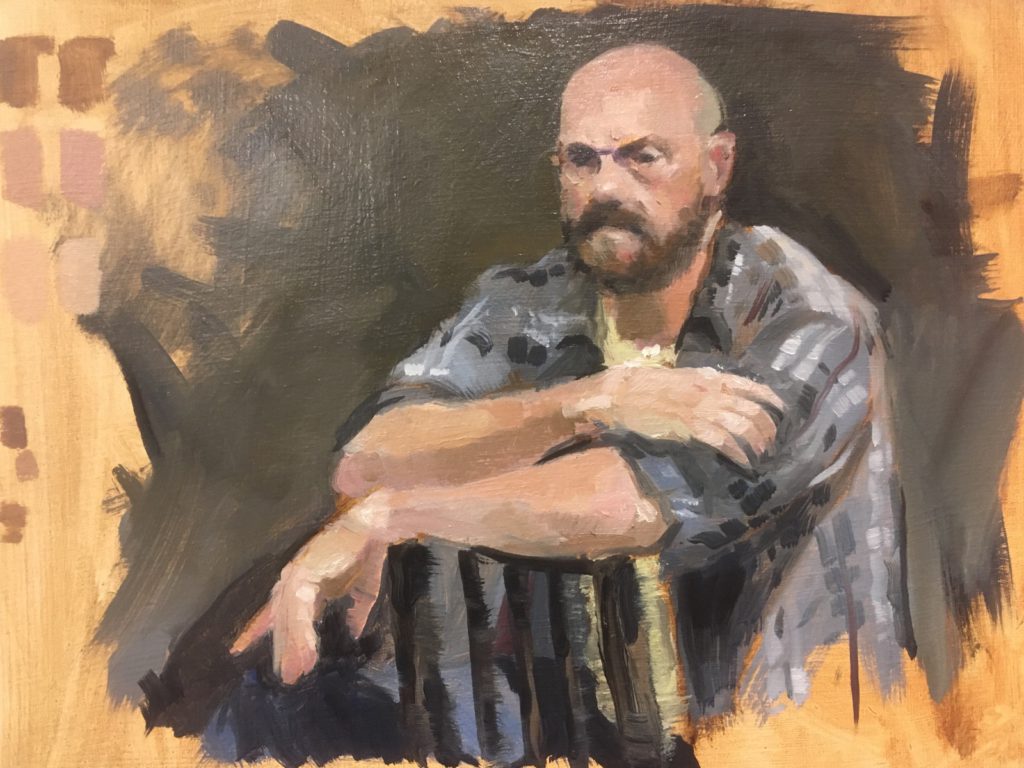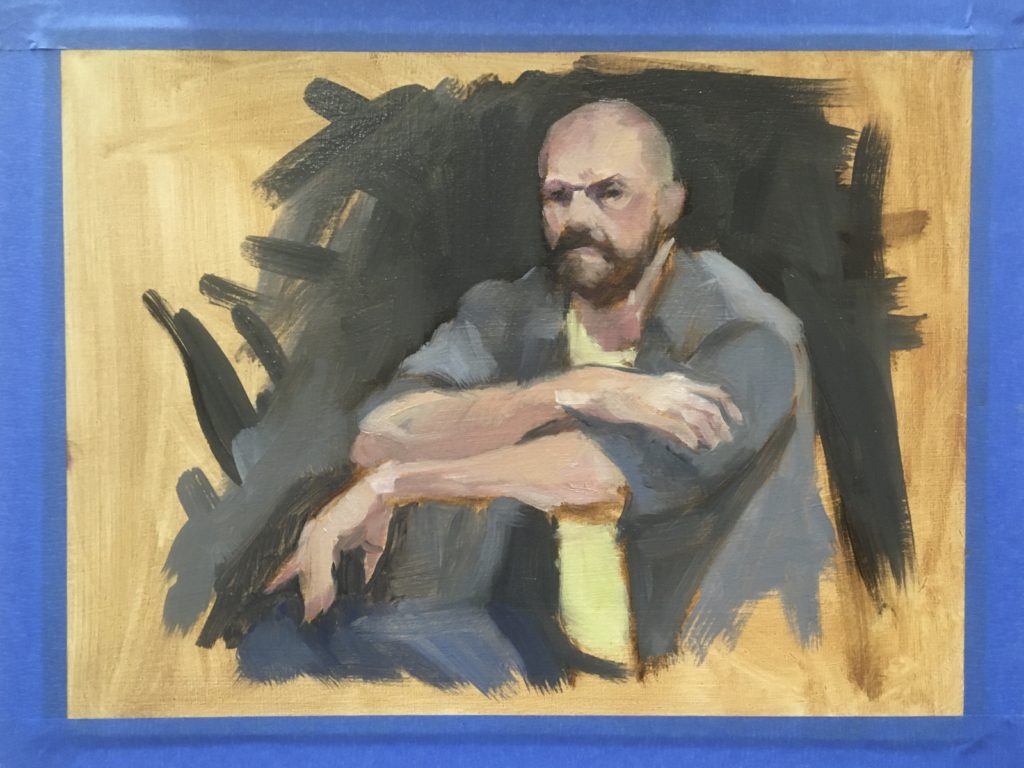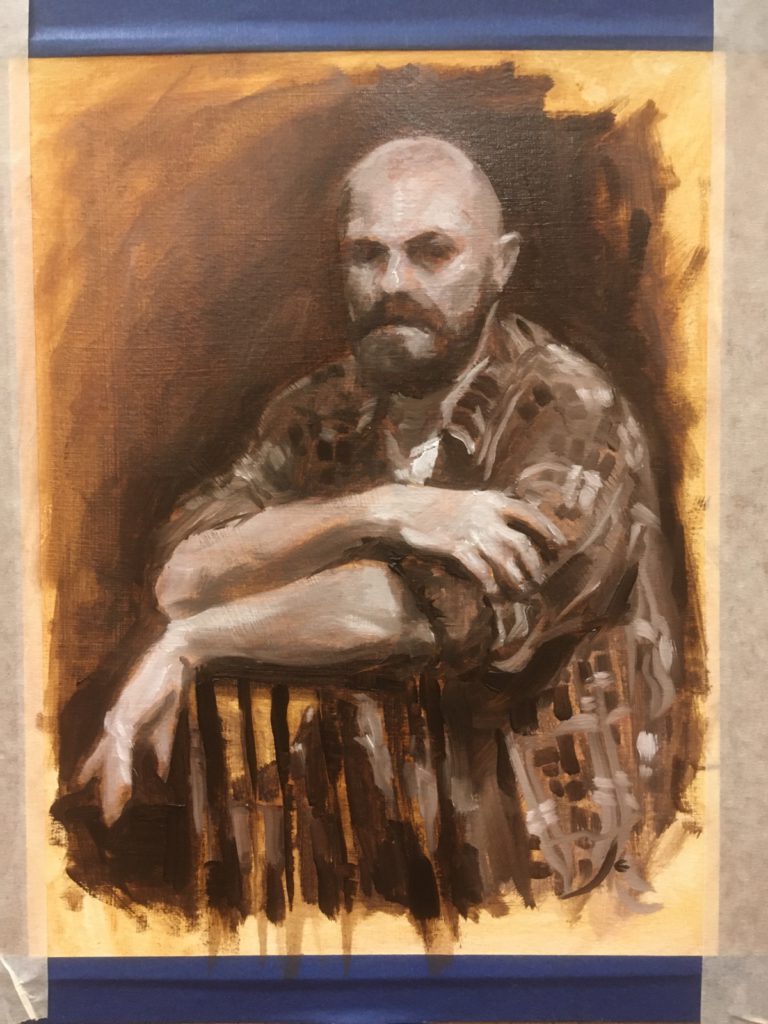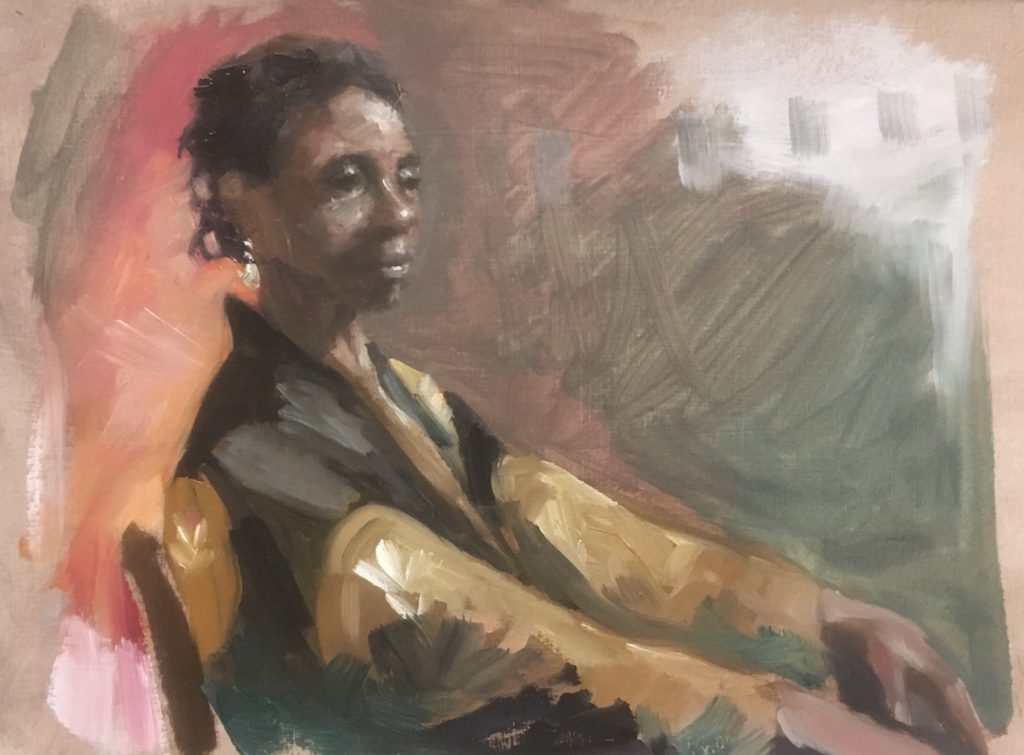
I have found much joy in painting small portraits. It all happened very gradually, but it all started when I visited and saw works by Thomas Dewing, especially of small female figures that he painted on small canvases.
My figure studies have expanded to accommodate smaller figures, too. When I am traveling and seeing people, I try to capture the entire figure into my small sketchbook.
Sketching small portraits with oil color has become my favorite and preferred way of drawing recently. Using limited palette, I can draw, paint, and refine my painting as much as I need to.
Winslow Homer is another American Painter that executed small figures, who told incredible stories on small canvases. The Veteran in a New Field is a good example of such works.
November has been a good painting m0nth, and I am getting closer to acquiring much of the technical skills I need to begin my own projects.
It’s hard to believe December is just a few days away. As we are trying to close out this year with positive news, we were hit with yet another COVID variant worries and updated travel restrictions. We can’t worry about what we don’t have control over, though.
